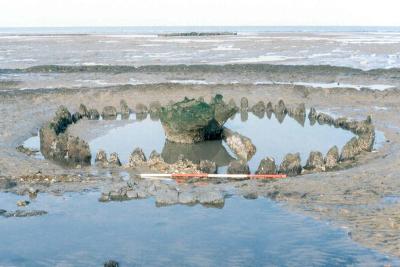Seahenge

The discovery
In the summer of 1998 the shifting sands of Holme beach on the north Norfolk coast revealed something extraordinary. Preserved in the sand were the remains of a unique timber circle dating back over 4000 years, to the Early Bronze Age. Although discovered on a modern beach, the circle was originally built on a saltmarsh, some way from the sea. The timbers were arranged in a circle 6.6m (21ft) in diameter, comprising 55 closely-fitted oak posts, each originally up to 3m (10ft) high. The site became known as 'Seahenge'.
The central stump
At the centre of the circle was a great upturned tree stump. It weighs well over a tonne and is 2.5m (8ft) in height and width. To move the stump a tow hole was cut and woven honey suckle ropes were used to drag the piece into position. The surface of the timber was shaped by axes made of bronze.
Dr Robin Hanley, Area Museums Officer for King's Lynn and West Norfolk, discusses theories about Seahenge, and the study and display of its timbers:









